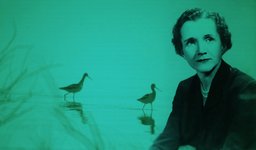Sublime
An inspiration engine for ideas

Rachel Carson returned her borrowed stardust to the universe 60 years ago today, having forever changed our relationship to the living world.
Image

Rachel Carson had never seen the sea herself, she threw herself into its study. She studied biology, then zoology, eventually taking a job as a writer for the U.S. Bureau of Fisheries. All of this was incredibly rare for a young woman in the 1920s and ’30s, but Carson’s trajectory was a demonstration of the expansive potential of curiosity.
inkl • What It Would Take to See the World Completely Differently
et le Printemps silencieux de Rachel Carson.
Nicholas Carr • Internet rend-il bête ? (French Edition)
Into the Raging Sea: Thirty-Three Mariners, One Megastorm, and the Sinking of El Faro
amazon.com
Rachel Carson in her book entitled Silent Spring, “As man proceeds towards his announced goal of the conquest of nature, he has written a depressing record of destruction, directed not only against the earth he inhabits but against the life that shares it with him.”
Dawn Lester • What Really Makes You Ill?: Why Everything You Thought You Knew About Disease Is Wrong
The Poetry of Science and Wonder as an Antidote to Self-Destruction: Rachel Carson’s Magnificent 1952 National Book Award Acceptance Speech
Maria Popovathemarginalian.org
